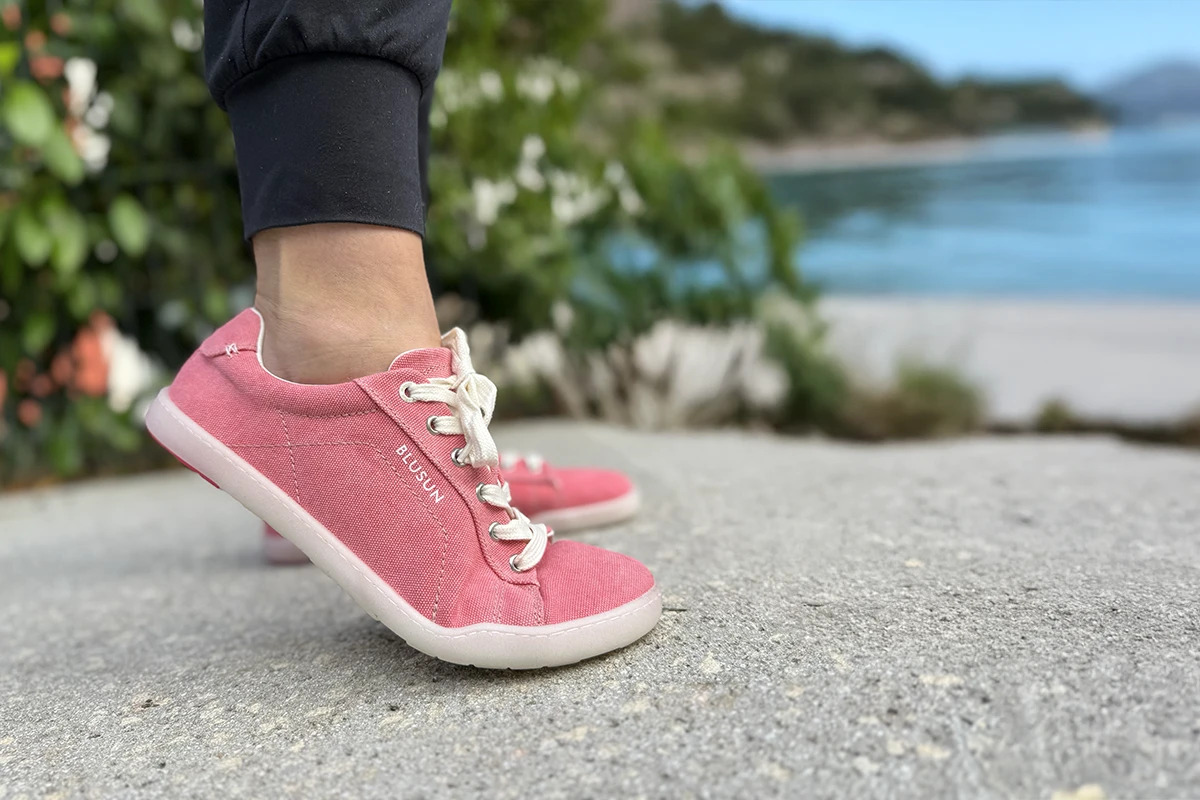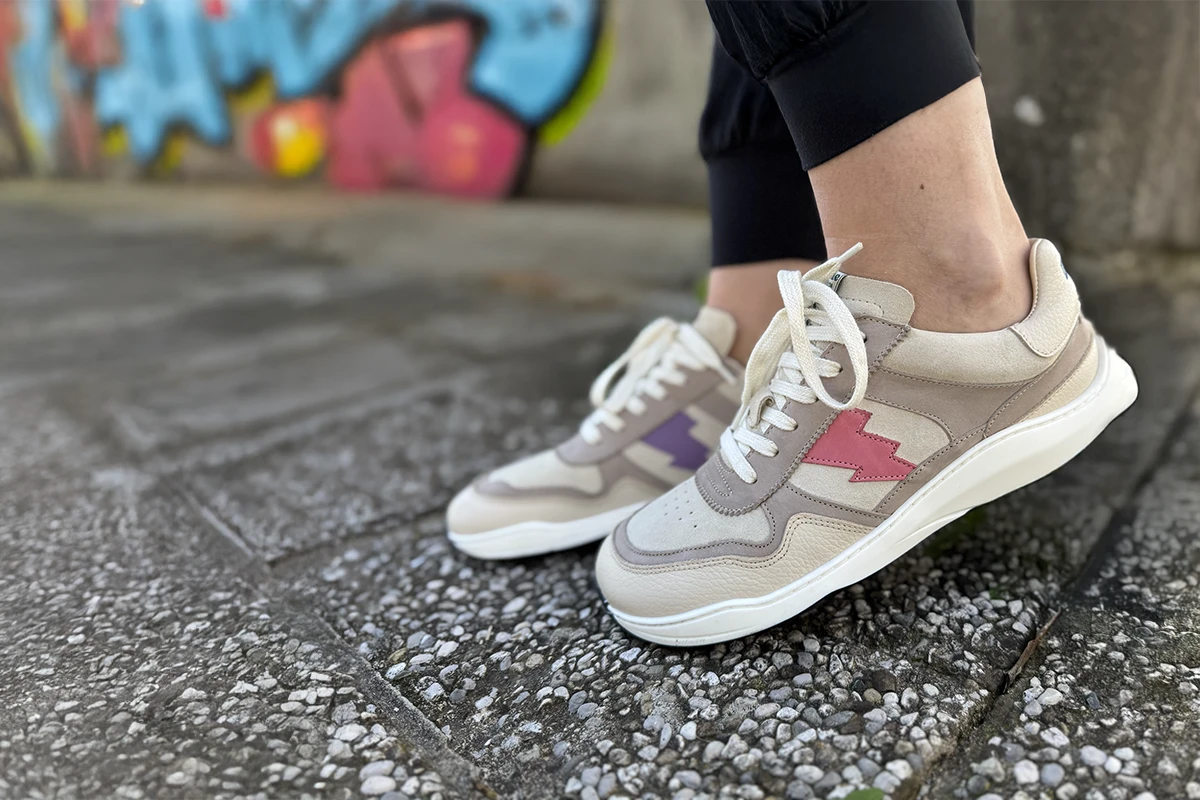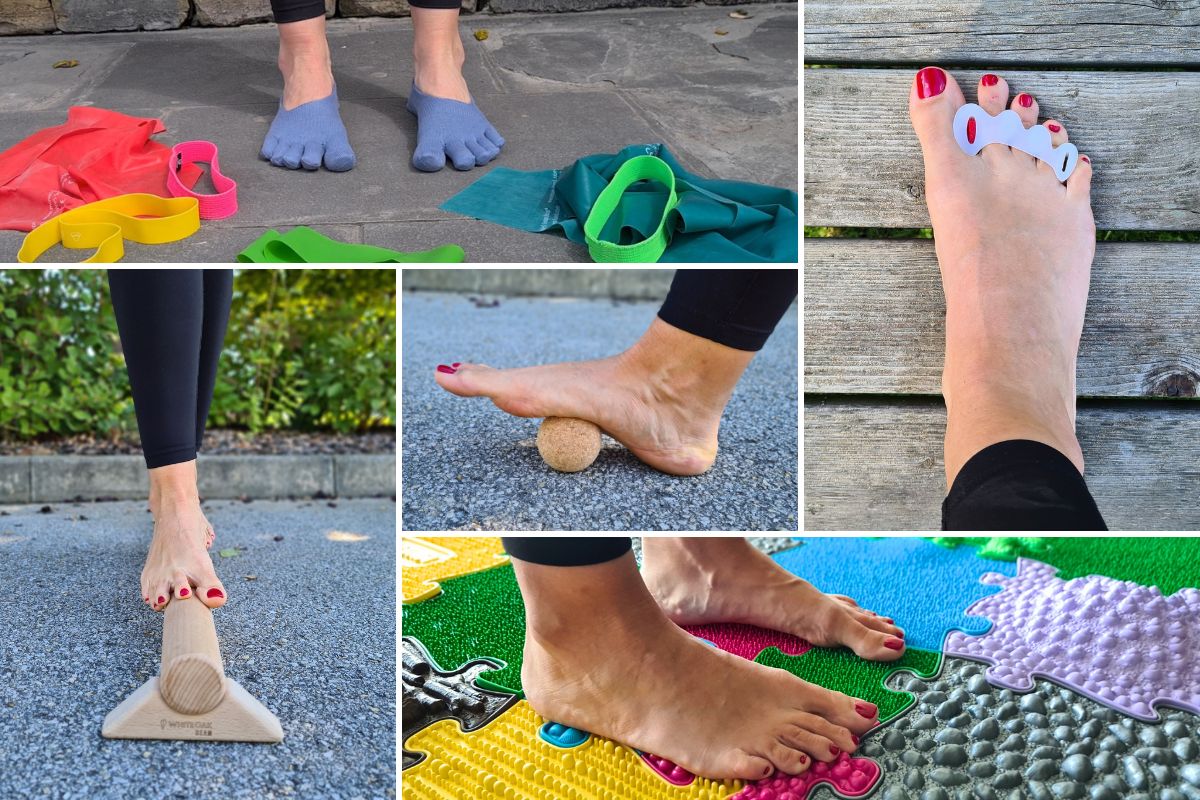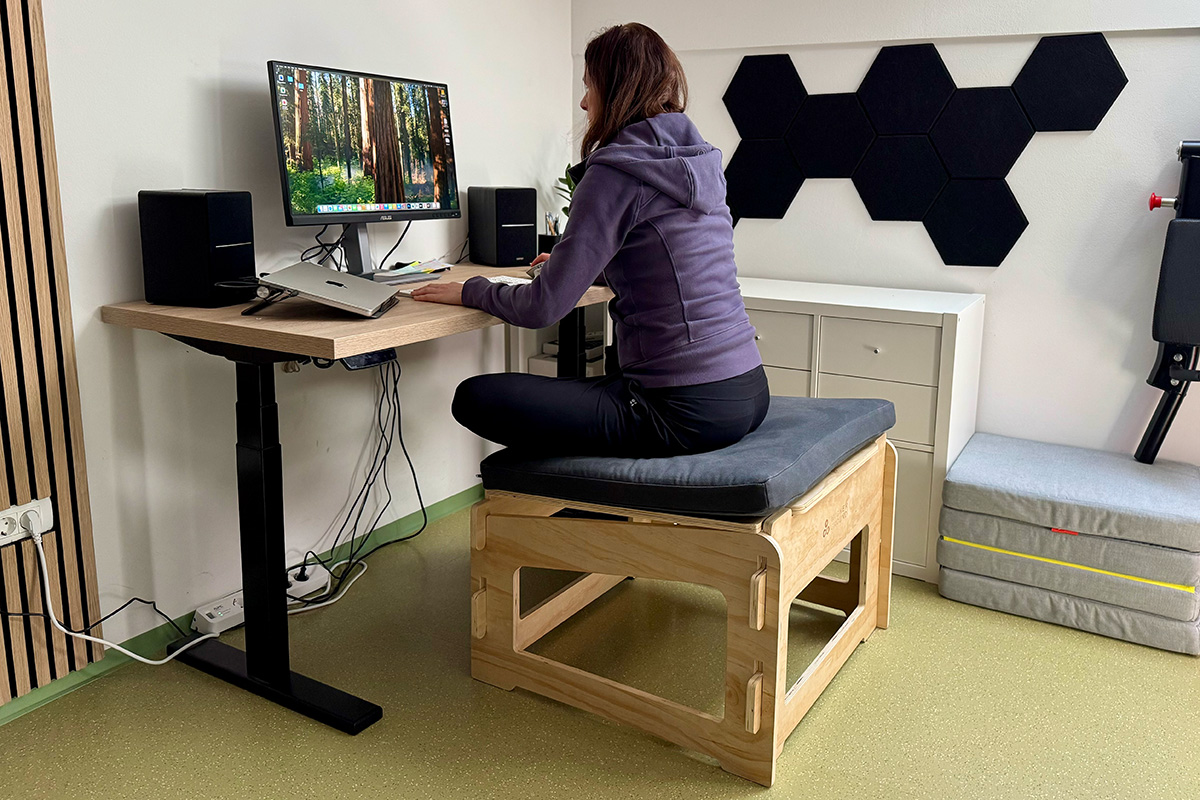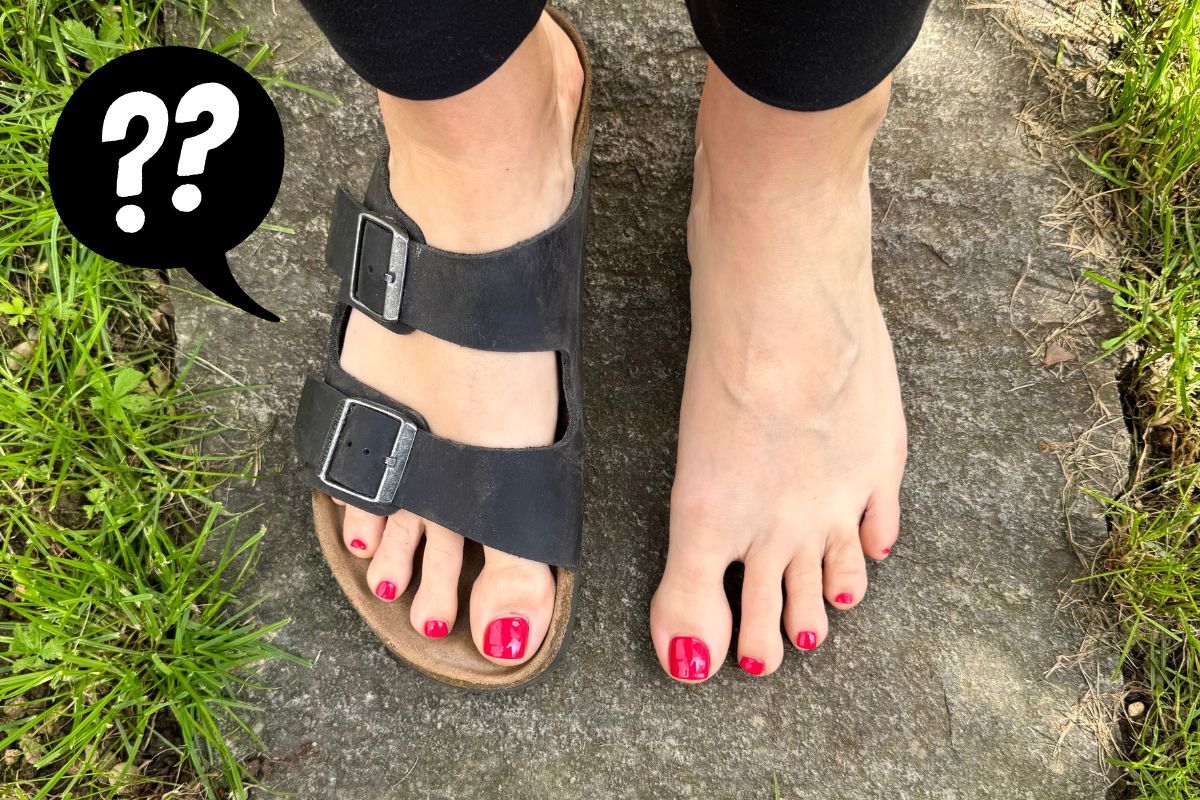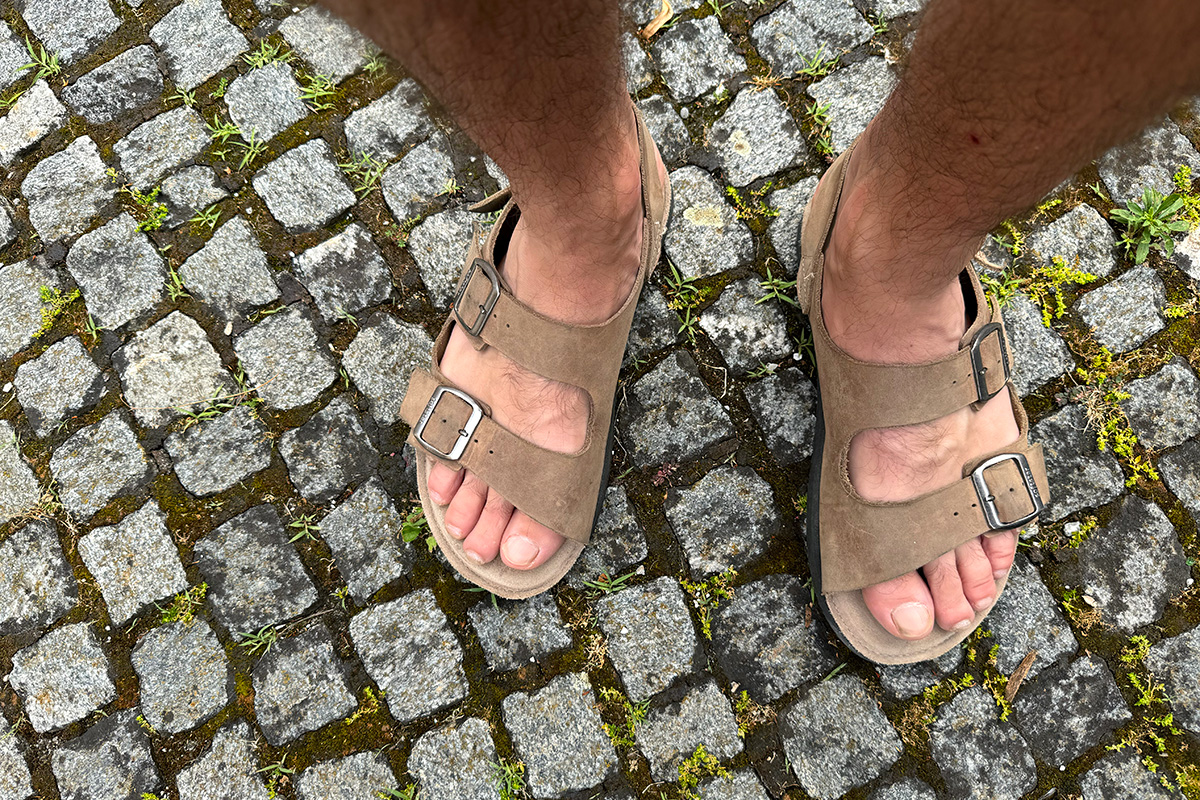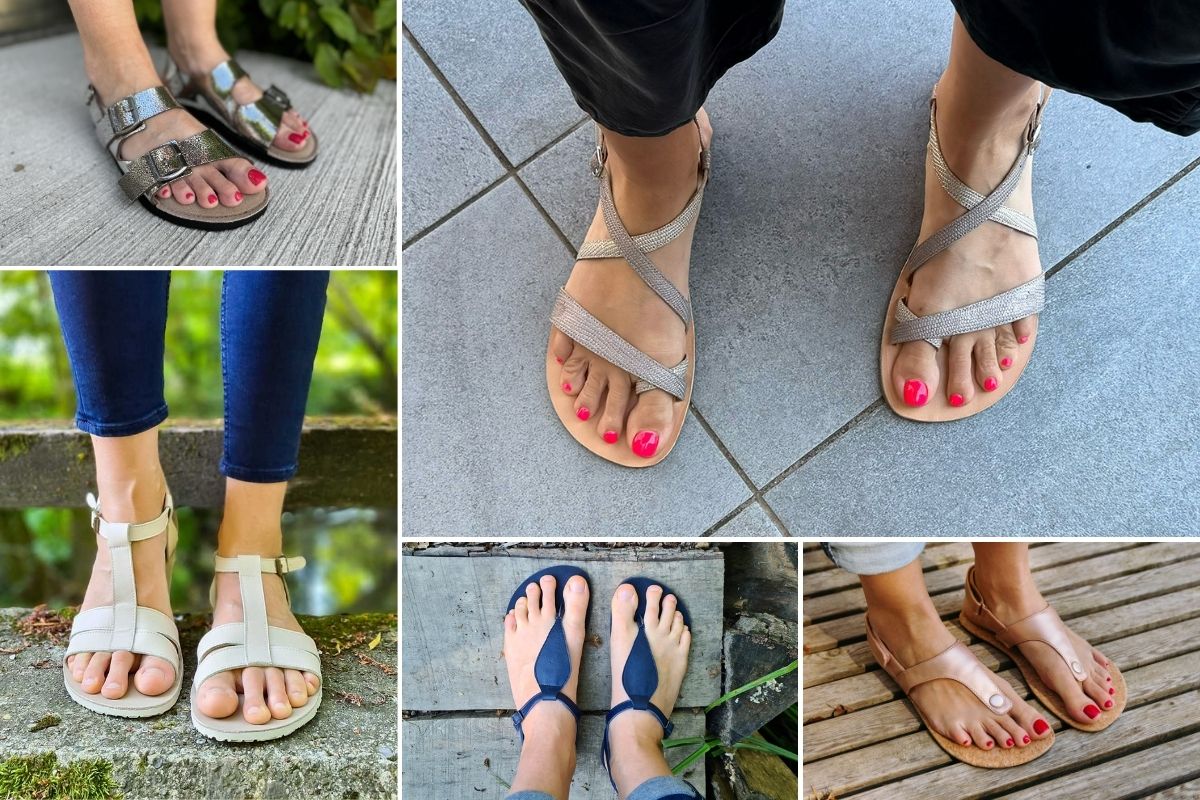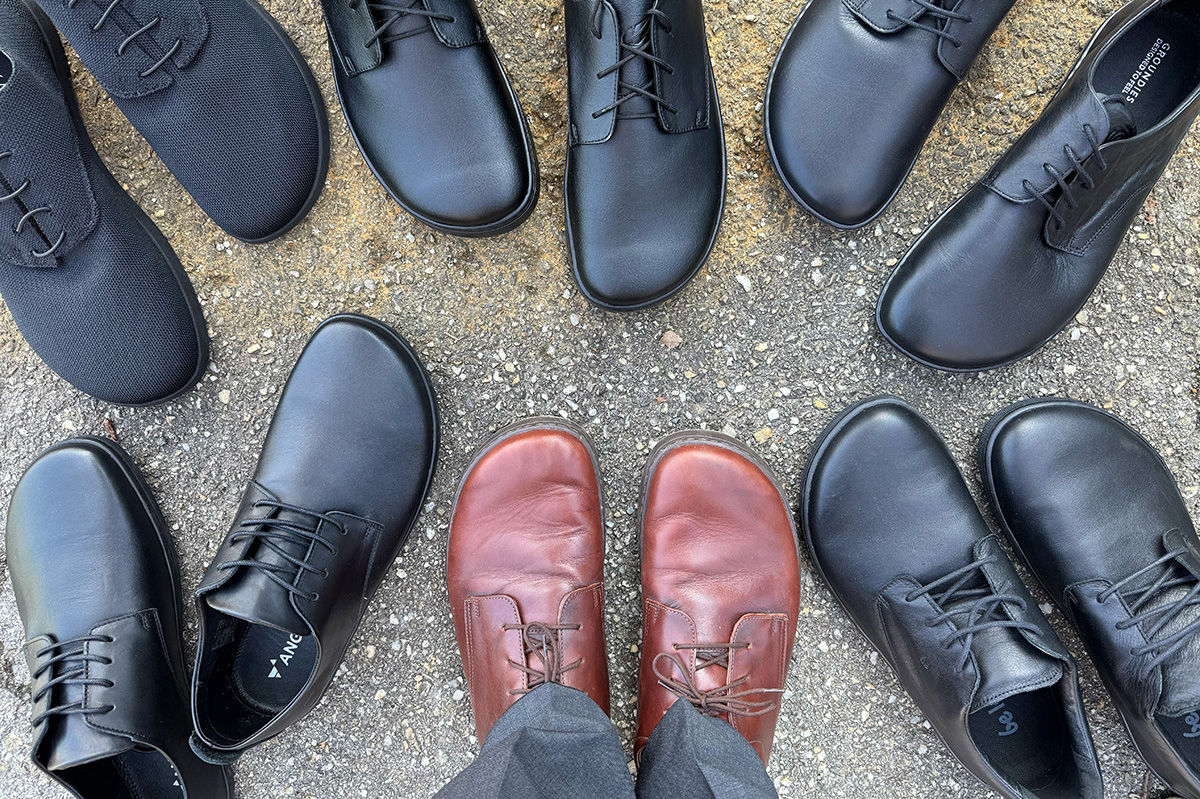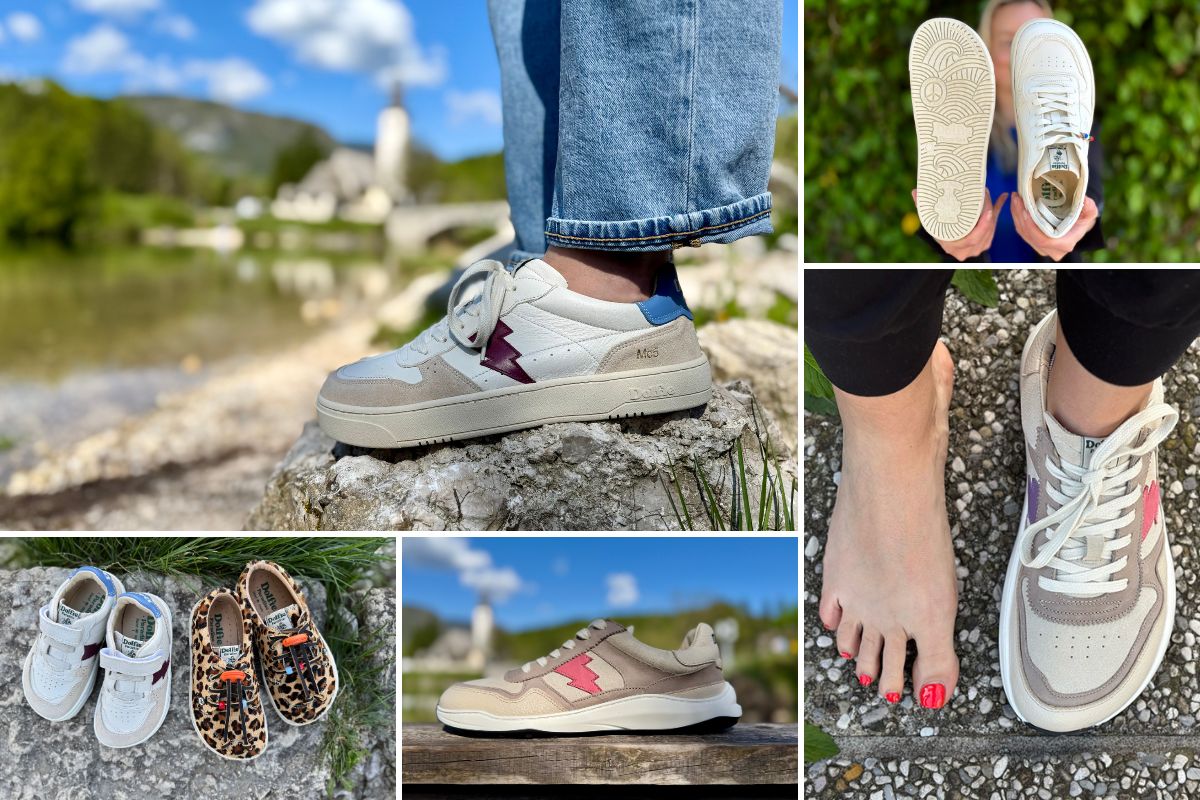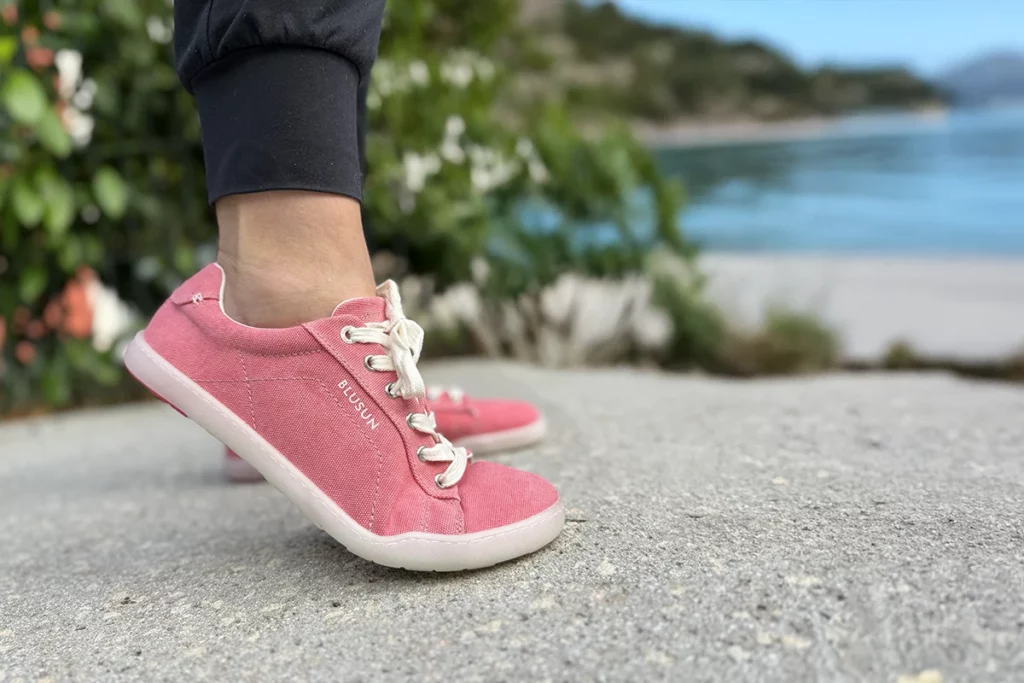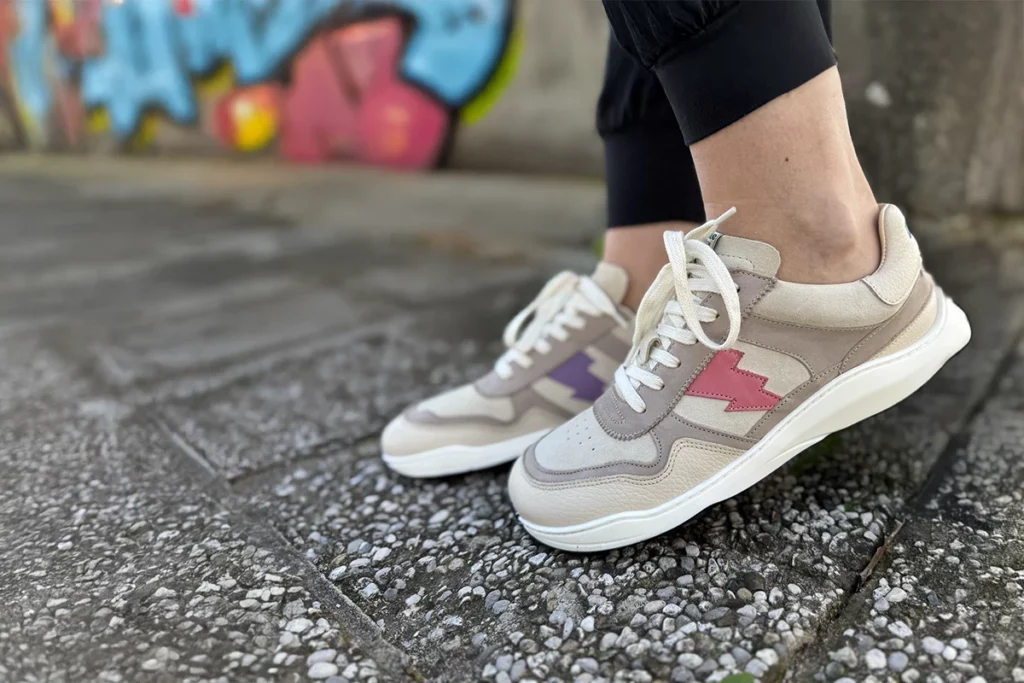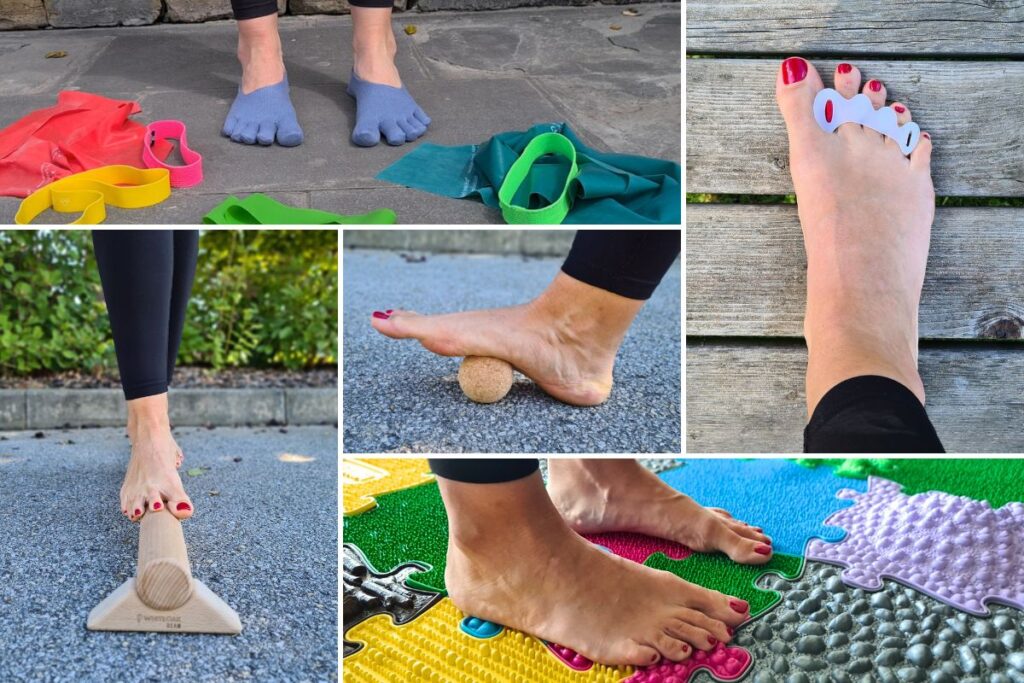
Foot types. It’s probably not something you’ve thought about much—until now. Then along came barefoot shoes, turning everything upside down, right? Knowing your foot type is important because it helps you choose the right barefoot shoe for the best fit.
Not all barefoot shoes work for every foot type (which makes sense since our feet are so different), so take your time to find a model that works for you.
But there’s one thing our feet all have in common: they’re naturally widest at the toes—unless they’ve been altered by wearing shoes (and socks!) that were too narrow and didn’t provide enough space, gradually changing their shape over time.
At first, choosing the right barefoot shoe might seem tricky, especially if you’re new to barefoot shoes. But don’t worry, it gets easier with time.
Heads-up! As you switch to barefoot footwear, expect changes in your foot shape. Your feet will start to regain their natural form with more toe spacing, increased strength, and better stability. Sounds amazing, doesn’t it? 🙂
All human feet are naturally widest at the toes
As you’ll see below, feet can vary in toe shape, length, width, foot shape, and volume. But they all share one thing in common—feet are naturally widest at the tip of the toes.
Unfortunately, modern shoes often deform our feet, shifting the widest point to the ball of the foot instead of the toes. But when you switch to barefoot shoes, your feet can gradually regain their natural shape. Don’t worry about this change—healthy, functional feet are beautiful!


When choosing barefoot shoes, always remember that your toes will naturally spread in barefoot shoes. So, make sure the model you pick allows enough space for that full toe splay, even after your feet fully regain their natural width.
Even the narrowest barefoot shoes might feel wider than regular shoes at first, but that doesn’t necessarily mean they’re wide enough for your feet!
Understanding Your Foot Length and Width
Knowing your foot’s length and width is the first step in finding the right shoes. It’s usually the only sizing info brands provide, but it’s key since different barefoot shoes fit different foot widths.
To make this process easier, you can use our Find Your Foot Width QUIZ to discover your foot width. The quiz compares your measurements to 50 millions of foot scans—just measure your foot length and width, and let the tool do the rest.

You can also get a visual idea of different foot widths by comparing them to reference examples. This can help you better understand where your feet fit on the width spectrum and what kind of shoe width will suit you best.



The photos below show examples of barefoot shoes that suit narrower feet (left) and wider feet (right). However, note that some narrow models may work for wider feet and vice versa. Not all models from one brand will fit the same way either.

Freet, Zeazoo, Wildling*, Leguano*

Getting to Know Your Foot Volume
Foot volume plays a big role in how shoes fit, impacting both the space inside and how securely they stay on while walking.
Generally, foot volume can be divided into three key areas:
- Volume in the toe area
- Volume in the midfoot area
- Volume in the instep area

Foot Volume in the Toe Area
When we talk about forefoot volume, we’re referring to the width and volume around the toes and metatarsals. The amount of space here is crucial to comfort.
Forefoot volume is usually measured by foot width and the circumference around the metatarsals. Even if the shoe is wide enough, if the overall volume doesn’t match your foot’s circumference, it could still feel too tight or too loose.

Things like the sole shape and shoe material also affect how much space you have in the toe area, making fit vary between models.
Midfoot Volume
Midfoot volume refers to the space between the toes and the instep. If your midfoot volume is too high or low for the shoe, it can affect how securely the shoe fits and feels.
For example, shoes with little room in the midfoot might feel tight, while those with too much space may feel loose and unstable.

Instep Volume
The volume in the instep area is typically determined by the height of the instep and the width of the foot in this area. In some cases, the circumference (from floor to floor) can also be measured.

A general guideline for assessing instep volume is to divide the arch length (ground to ground) by the foot length:
The value approximately determines the volume of the foot (height of the instep):
– Low instep: less than 0.7
– Average instep: 0.71 – 0.78
– High instep: 0.78 or more
Note: This is just an approximation. Your foot volume is a combination of height and width, and not all high insteps indicate high volume and vice versa.

Please also note that volume isn’t just about one dimension. It refers to how much space your feet take up in both height and width. So, having a high instep doesn’t always mean you have a high overall foot volume. In some cases, they might go hand-in-hand, but it’s not always the case.


How to Recognize Your Foot Volume
You can get a sense of your foot volume by trying different shoes and observing how they fit. Pay attention to lace positions and the fit of slip-on models.


For example, I realized I have a low instep after trying multiple barefoot shoes. I often had to tighten the laces fully or add extra holes in sandals for a better fit. Slip-on models rarely worked for me, as they were too loose over my instep. People with high insteps have the opposite issue—everything feels too tight. If neither of these sounds familiar, you likely have an average instep and foot volume.
Toe Shape
People have different toe shapes, and understanding yours is key to finding the right barefoot shoe. The shape of your toes can impact the fit and comfort of any shoe.
You may have heard of terms like Greek, Egyptian, or Roman foot types, but we won’t use them here since they don’t accurately describe the actual foot shape. Instead, we’ll look at the most common shapes:

- Steep Slope: Longest big toe with a steep slope toward the pinky toe.
- Gentle Slope: Big toe is still longest, but with a gentler curve.
- Square: Toes are of similar length, creating a straight line.
- Mountain: Second toe is the longest, with a visible difference between the big and second toe.
- Plateau 2: First two toes are the same length, the rest slope.
- Plateau 3: First three toes are the same length, the rest slope.
Of course, there are more variations, but these are the most common.
Finding barefoot shoes that match your unique toe shape is essential for comfort, but it’s not just about having enough space at the toes. The shape and slope of the toe box should closely align with your foot’s natural shape to ensure a better fit. While perfect alignment isn’t always possible, how well the shoe matches your foot will significantly impact both the fit and the space available for your toes.
Certain foot types—especially wider or more square feet—can have difficulty finding a good fit, particularly if there isn’t enough length for the little toes or sufficient width across the forefoot. These deviations in fit are something to keep in mind when selecting a model.

Because toes come in different shapes, toe boxes can vary just as much. Some barefoot models have a steeper slope toward the pinky toe, while others are more rounded or square, suiting different foot types. Even if the shoe length is correct, the shape of the toe box can still impact how comfortably your toes fit. For more details, check out our post on ‘The Best Barefoot Shoes For My Foot Width & Shape‘ to learn how these variations affect fit.


Foot Shapes
Straight Line or Bean Shape
Feet can vary in shape—some are more “straight,” while others have a “bean shape.”
When our body is centered, the foot naturally adopts a slight “bean shape,” with the big toe curving slightly outward and toes aligned with the metatarsals. This shape forms naturally when the foot isn’t restricted by footwear and has space for the toes to spread, and when the hips, knees, and ankles are in alignment, helping the arch to form.
The shape of barefoot shoes should mimic this natural curve on the inner side. However, if the foot is overly “bean-shaped,” it often indicates overpronation at the forefoot and supination at the rear foot.


On the other hand, when the body compensates for a lack of movement or alignment by trying to function as best as possible despite imbalances, a straighter foot shape can develop. This often results from issues like a collapsed arch, where the ankles roll inward.
Proper feet and body alignment helps address foot issues like overpronation, flat feet, bunions, and even different foot lengths. Since everything in our body is connected, even the position of your femur can influence foot alignment. Interesting, isn’t it?
Fin Shape or Square Shape
The human foot in its natural state is narrowest at the heel and widest at the toes. This gives the foot a “V” or fin shape, though this can vary.
The ratio between the width of the heel and the width of the forefoot determines how pronounced this shape is. A greater difference results in a more pronounced fin shape, while a smaller difference creates a squarer appearance.

Feet are generally classified into four categories:
- Narrow heel – narrow forefoot: more straight shape.
- Narrow heel – average to wide forefoot: classic fin shape.
- Average heel – narrow to medium forefoot: straight but slightly wider.
- Average to wide heel – medium to wide forefoot: mild fin shape.
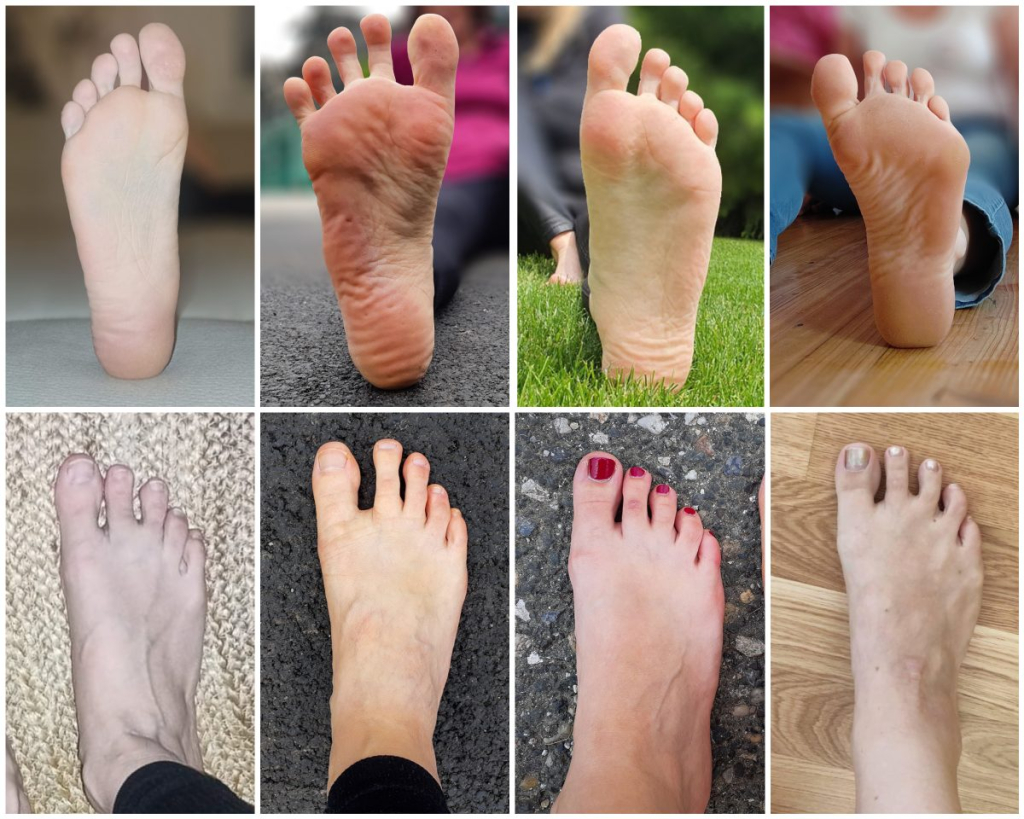
Barefoot Shoes: A Tool, Not a Magic Wand
Healthy, functional feet are widest at the toes, with a formed arch, and toes aligned with the metatarsals. The feet should have the ability to pronate and supinate adequately.
If your feet aren’t currently in their natural shape, don’t worry. Wearing barefoot shoes and working on your feet and body will help create the right conditions for your body to restore its natural function.
Remember, barefoot shoes are a tool—not a magic wand. Choose shoes that match your foot’s length, width, shape, and volume, and support this change with body alignment exercises.
Ready to Learn Even More About Foot Types and Fit?
Check out the Barefoot Universe Academy for tips on matching foot shapes with shoe designs and finding the perfect fit. Discover simple ways to support your feet’s natural shape and comfort.

